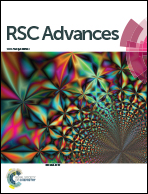Fabrication and characterization of polyamide thin-film composite membrane via interfacial polycondensation for pervaporation separation of salt and arsenic from water
Abstract
Pervaporation, mainly utilized to separate azeotropic mixtures, has been paid much attention for desalination in recent years due to its numerous advantages. The membranes based on thin-film composite structure have gained great interest in pervaporation due to their thin thickness, controllable hydrophilicity, and crosslinking density which affects the permeation flux and selectivity of the membranes. In this study, a polyamide thin-film composite (PA-TFC) membrane was fabricated through interfacial polymerization between amine monomers and trimesoyl chloride (TMC) on a polysulfone porous substrate (PSf). Four different diamine monomers, including ethylenediamine (EDA), triethylenetetramine (TETA), m-phenylenediamine (MPD), and piperazine (PIP) were used to investigate the effect of the monomers on the pervaporation performance of the resulting membrane for separation of sodium chloride (NaCl) and arsenate (As(V)) aqueous solution. The physicochemical properties of the membrane were characterized using attenuated total reflection Fourier transform infrared (ATR-FTIR), scanning electron microscopy (SEM), atomic force microscopy (AFM), and pure water contact angle measurement. Furthermore, the performance of the fabricated membranes was studied by pervaporation separation of 0.15 mg L−1 As(V) and 5 g L−1 NaCl aqueous solution at 40 °C, respectively. The results show that the rejections of the membrane are insignificantly affected by the chemical structures of the amines, and both the As(V) rejection and NaCl rejection are higher than 99.9%. However, the permeation flux decreases in the order of PIP-TMC membrane > TETA-TMC membrane ∼ EDA-TMC membrane > MPD-TMC membrane. Furthermore, the operating conditions are found to affect the separation performance of the PIP-TMC membrane significantly. In particular, the elevating operation temperature profoundly increases the permeation flux, while the increase in high salt concentration leads to a slight decrease in rejection but a significant decline in permeation flux. The derived membrane shows a reasonable permeation flux of 16.1 kg m−2 h−1 and ca. 99.9% rejection for 1.5 mg L−1 As(V) removal, as well as 13 kg m−2 h−1 and 99.3% rejection for 30 g L−1 NaCl separation at 60 °C. The sufficient permeation flux and good rejection of As(V) and NaCl of the membrane suggested the promising application of PA-TFC membrane for pervaporation removal of toxic arsenic from water and desalination of seawater.



 Please wait while we load your content...
Please wait while we load your content...